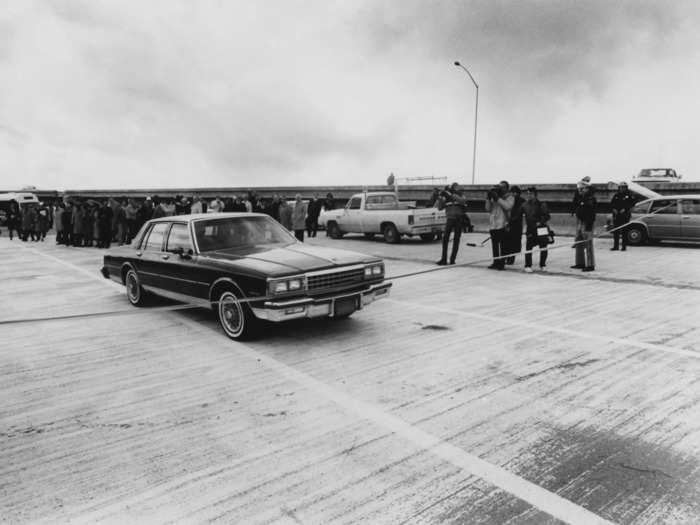
Construction widening the I-66 in Virginia.Gerald Martineau/The The Washington Post via Getty Images
Some of the widest highways in the US have more than 20 lanes — and traffic is still getting worse.
Last year, the federal government enacted an infrastructure law, providing states with $350 billion for highways. Even though more lanes often just means more traffic, a number of states, including New York, Texas, Oregon, and Maryland, are considering highway widening projects to ease congestion.
But new highways will hurt the communities they cut through and the climate in general.
Here are some of the widest highways in America — and why widening them won't solve the problem.

Source: The Guardian

Source: Los Angeles Times

Source: Texas Standard

Source: The Guardian

Source: PolitiFact

Source: PolitiFact

Source: New York Times

Sources: Bloomberg, The Guardian

Sources: New York Times, The Guardian

Source: Curbed

Sources: Bloomberg, The Guardian

Source: New York Times

But President Biden's administration showed a gentle indication for its preferred spending.
Stephanie Pollack, deputy administrator of the Federal Highway Administration, sent a memo to her staff telling them to encourage governments to first look at fixing current roads before laying new ones.
Source: Wired

Source: New York Times

Sources: New York Times, Washington Post

For comparison, the agricultural industry is responsible for 11% of the country's greenhouse gas emissions.
Source: EPA

Considering Los Angeles is known for its congested highways, this was a big deal.
The decision was made after another recently completed project in Los Angeles only temporarily eased traffic before it increased again.
Source: New York Times

Its air quality is already so bad local scientists have recommended that local school children don't play outside.
Source: Bloomberg

Sources: The Guardian, New York Times

Buttigieg has publicly backed prioritizing fixing existing highways over building new ones.
Sources: New York Times, Bloomberg

Source: New York Times


Source: Curbed

Source: The Guardian

The charge would aim at prompting people to travel at different times and only those who needed to travel at peak times would pay the fee meaning traffic would be eased and wider motorways wouldn't be necessary.
It's worked in London and in Stockholm.
Source: The Conversation

Source: New York Times

Source: The Guardian
 US buys 81 Soviet-era combat aircraft from Russia's ally costing on average less than $20,000 each, report says
US buys 81 Soviet-era combat aircraft from Russia's ally costing on average less than $20,000 each, report says 2 states where home prices are falling because there are too many houses and not enough buyers
2 states where home prices are falling because there are too many houses and not enough buyers A couple accidentally shipped their cat in an Amazon return package. It arrived safely 6 days later, hundreds of miles away.
A couple accidentally shipped their cat in an Amazon return package. It arrived safely 6 days later, hundreds of miles away. 9 health benefits of drinking sugarcane juice in summer
9 health benefits of drinking sugarcane juice in summer
 10 benefits of incorporating almond oil into your daily diet
10 benefits of incorporating almond oil into your daily diet
 From heart health to detoxification: 10 reasons to eat beetroot
From heart health to detoxification: 10 reasons to eat beetroot

Copyright © 2024. Times Internet Limited. All rights reserved.For reprint rights. Times Syndication Service.